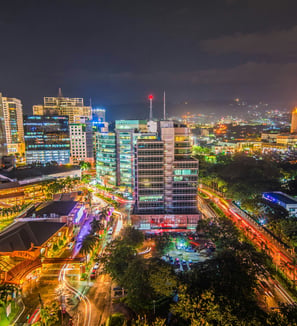Navigating the Path: How Filipinas Can Secure Work Visas to the US, Canada, and Australia
FILIPINO DATING CULTUREVISA ADVICE


What you need to know to bring your Filipino partner back to your country and the working visa options available to Filipinas
Hey there, folks! If you're reading this, chances are you're interested in helping a Filipina friend, partner, or maybe even someone you met online to find opportunities abroad. Well, you're in the right place. As expats living in the Philippines, we’ve seen firsthand how many Filipinas dream of working in Western countries like the US, Canada, and Australia. The good news? It's entirely possible. The bad news? It’s a bit of a labyrinthine process. But don't worry, we’re here to guide you through it.
Eligibility: Who Can Apply?
Before diving into the nitty-gritty of the application process, it’s crucial to understand who is eligible for these work visas. Generally, the requirements revolve around skills, education, and job offers.
The US
For the US, the H-1B visa is the most common work visa for skilled workers. To be eligible:
1. Job Offer: The applicant must have a job offer from a US employer.
2. Specialty Occupation: The job must be in a specialty occupation requiring specialized knowledge.
3. Education: A bachelor's degree or its equivalent in the relevant field is usually required.
Canada
Canada offers several avenues for work visas, but the Temporary Foreign Worker Program (TFWP) and the Express Entry system are the most popular.
1. Job Offer: Similar to the US, a job offer from a Canadian employer is typically required.
2. Labor Market Impact Assessment (LMIA): Employers often need to obtain an LMIA to prove that hiring a foreign worker won’t negatively impact the Canadian job market.
3. Education and Skills: Depending on the job, specific educational qualifications and skills are necessary.
Australia
Australia’s most common work visa is the Temporary Skill Shortage (TSS) visa.
1. Job Offer: An employer sponsorship is essential.
2. Skills Assessment: A skills assessment may be required to prove the applicant’s qualifications.
3. English Proficiency: Proof of English language proficiency is often necessary.
Application Processes: Step-by-Step
The US
1. Job Search: The first step is finding a job. Websites like LinkedIn, Indeed, and Glassdoor are great places to start.
2. Employer Sponsorship: Once a job is secured, the employer will file a Labor Condition Application (LCA) with the Department of Labor.
3. Petition Filing: The employer then files Form I-129, Petition for a Nonimmigrant Worker, with the US Citizenship and Immigration Services (USCIS).
4. Visa Application: After USCIS approves the petition, the applicant can apply for the visa at a US embassy or consulate.
Canada
1. Job Search: Use job portals like Job Bank, Workopolis, or Monster to find job openings.
2. LMIA: If required, the employer will apply for an LMIA.
3. Work Permit Application: Once the LMIA is approved, the applicant can apply for a work permit through Immigration, Refugees, and Citizenship Canada (IRCC).
Australia
1. Job Search: Websites like Seek, Indeed, and JobSearch are good starting points.
2. Employer Sponsorship: The employer must be an approved sponsor and will nominate the applicant for a position.
3. Visa Application: The applicant then applies for the TSS visa through the Department of Home Affairs.
Industries That Commonly Sponsor Foreign Workers
America
1. Technology: Silicon Valley giants like Google, Facebook, and Apple frequently sponsor H-1B visas.
2. Healthcare: Hospitals and healthcare facilities often sponsor nurses and medical professionals.
3. Education: Universities and research institutions are also common sponsors.
The US doesn't have a skilled occupation list like Australia and Canada but their Customs and Immigration site contains more information about eligibility for skilled workers.
Canada
1. Information Technology: Companies like Shopify and Blackberry often look for tech talent.
2. Healthcare: Nurses, doctors, and other healthcare professionals are in high demand.
3. Construction: Skilled laborers and engineers are frequently needed.
Canada publishes their list of in-demand, skilled occupations on their official government immigration site.
Australia
1. Healthcare: Australia has a significant demand for nurses and medical professionals.
2. Engineering: Civil, mechanical, and electrical engineers are often sponsored.
3. Mining: The mining industry is a big player in Australia and frequently sponsors skilled workers.
The best resource to see if your skills are in demand is the Skilled Occupation List on the official Australian government's immigration depart.
Personal Anecdotes
Let me share a little story about my friend Jane. She was a nurse here in Manila and always dreamt of working in the US. She started applying for jobs online and finally landed an offer from a hospital in California. The process wasn’t easy—there were a lot of forms and interviews—but she stuck with it. After about a year, she finally got her H-1B visa. Now, she's living her dream, and she couldn’t be happier.
Conclusion
Helping a Filipina navigate the work visa process for Western countries is a rewarding endeavor, but it requires patience, diligence, and a bit of know-how. Whether it’s the US, Canada, or Australia, the journey involves several steps, from securing a job offer to navigating the various application processes. However, the dream is achievable, and with the right guidance, your Filipina friend or partner can find the opportunities she’s looking for.













